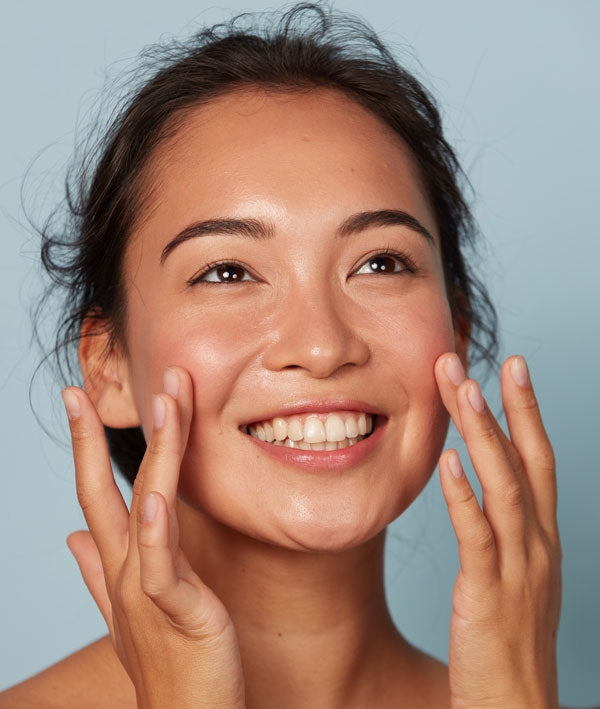Acids have quickly become some of the most talked-about ingredients in modern skincare. Once reserved for dermatologist offices and professional treatments, they’re now readily available in over-the-counter serums, toners, and exfoliants. But with so many different types of acids—each with unique benefits and potency levels—it’s easy to feel overwhelmed. One of the biggest questions skincare enthusiasts have is: how do you layer acids safely and effectively for the best results?
This complete guide will walk you through why acids are powerful, which ones to choose, how to layer them correctly, and what combinations to avoid. By the end, you’ll have a clear framework for building a routine that works for your skin type and goals.
Why Acids Are a Powerful Tool in Skincare
In skincare, acids are active ingredients that deliver targeted results by changing how the skin behaves at a cellular level. They’re not just buzzwords—they’re backed by decades of dermatological research.
Here’s why they matter:
- Exfoliation and cell turnover: Acids like AHAs (alpha-hydroxy acids) and BHAs (beta-hydroxy acids) help slough off dead skin cells, revealing fresher, smoother skin underneath.
- Brightening: Many acids reduce dullness and fade dark spots by evening out pigmentation.
- Anti-aging: Certain acids stimulate collagen production, soften fine lines, and improve elasticity.
- Acne-fighting: Salicylic acid penetrates pores to clear congestion and reduce breakouts.
- Hydration: Not all acids are exfoliating—some, like hyaluronic acid, actually boost hydration.
In short, acids are multitaskers. Whether your goal is to smooth texture, brighten, hydrate, or treat acne, there’s likely an acid for you. The trick lies in knowing which to use and how to combine them.
The Most Common Skincare Acids & Their Benefits
Before learning how to layer acids, it’s important to understand the most common types and what they do.
Alpha-Hydroxy Acids (AHAs)
AHAs are water-soluble acids derived from fruits and milk. They primarily target the skin’s surface for exfoliation.
- Glycolic Acid: The smallest AHA, penetrates deeply to smooth fine lines and fade hyperpigmentation.
- Lactic Acid: Gentler than glycolic, hydrates while exfoliating—ideal for sensitive or dry skin.
- Mandelic Acid: Larger molecule, penetrates slowly—great for acne-prone and sensitive skin.
Beta-Hydroxy Acids (BHAs)
BHAs are oil-soluble, meaning they can penetrate into pores.
- Salicylic Acid: The most common BHA, excellent for unclogging pores, reducing blackheads, and calming acne.
Polyhydroxy Acids (PHAs)
The newest generation of exfoliating acids, PHAs are gentler and also hydrate the skin.
- Gluconolactone, Lactobionic Acid: Provide mild exfoliation and antioxidant benefits with less irritation.
Hyaluronic Acid (HA)
Not an exfoliating acid, but a hydrating powerhouse. It binds up to 1,000 times its weight in water, plumping the skin and enhancing other actives.
Azelaic Acid
A versatile acid with anti-inflammatory and antibacterial properties. Great for redness, rosacea, acne, and pigmentation issues.
Ascorbic Acid (Vitamin C)
A potent antioxidant that brightens skin, evens tone, and supports collagen production. Best used in the morning to protect against environmental stressors.
Retinoic Acid (Retinoids)
Technically vitamin A derivatives rather than traditional acids, but they function similarly by increasing cell turnover and improving wrinkles, acne, and uneven tone.
Each of these acids has its strengths—but they’re not all meant to be layered together.
How to Safely Layer Acids in Your Skincare Routine
Layering acids requires strategy. Used correctly, they can transform your skin. Used incorrectly, they can cause redness, peeling, and irritation.
Here are key principles to follow:
- Start with clean, dry skin. Apply acids after cleansing, before thicker serums and moisturizers.
- Order matters. Apply from thinnest to thickest consistency (toners → serums → creams).
- Layer similar acids together, but with caution. For example, glycolic and lactic acid may be used in alternating routines, not stacked in one session.
- Use the “rule of one.” For beginners, stick to one exfoliating acid at a time until your skin builds tolerance.
- Hydration is key. Always pair exfoliating acids with hydrating ingredients (like hyaluronic acid) and nourishing moisturizers.
- Less is more. Over-exfoliation disrupts the skin barrier and causes sensitivity. Aim for 2–4 acid treatments per week, not daily (unless it’s a hydrating acid like HA).
Pro Tip: Introduce acids slowly. Patch test first and add one acid into your routine at a time so you can monitor how your skin responds.
What Not to Mix: Acid Combinations to Avoid
Not all acids play nicely together. Some combinations can cause excessive irritation, dryness, or cancel each other out.
Avoid These Pairings:
-
Vitamin C (Ascorbic Acid) + AHAs/BHAs
The low pH of exfoliating acids destabilizes vitamin C, reducing its effectiveness. Use vitamin C in the morning and exfoliating acids at night. -
Retinoids + AHAs/BHAs
Both increase cell turnover, which can overwhelm skin and cause peeling or irritation. Alternate nights rather than layering. -
Strong AHAs (like glycolic) + Other Strong Exfoliants (like salicylic or mandelic)
Doubling up can lead to barrier damage. Instead, rotate between acids on different days. -
Benzoyl Peroxide + Vitamin C
Benzoyl peroxide oxidizes vitamin C, rendering it useless. If you need both, use benzoyl peroxide at night and vitamin C in the morning.
Safe Combos That Work Well:
- Hyaluronic Acid + Any Exfoliating Acid (HA hydrates and soothes, balancing dryness).
- Azelaic Acid + AHAs/BHAs (Azelaic is gentle and can calm inflammation while exfoliants smooth texture).
- Vitamin C (AM) + Retinoid (PM) (Antioxidant protection during the day, cell renewal at night).
Best Time to Apply Acids: Morning vs. Night
Timing matters when it comes to acids. Some shine during the day, while others are best left for nighttime routines.
- Morning-Friendly Acids:
- Vitamin C (ascorbic acid): Protects against free radicals from UV and pollution.
- Hyaluronic acid: Keeps skin hydrated and plump all day.
- Azelaic acid: Calms redness and inflammation, safe for daytime use.
- Nighttime Acids:
- AHAs and BHAs: Exfoliation makes skin more photosensitive, so these are best used at night.
- Retinoids: Sun exposure deactivates retinoids, and nighttime is ideal for repair and renewal.
- Stronger treatments (glycolic peels, multi-acid serums): Allow skin to recover while you sleep.
Always use SPF. No matter which acids you use, sun protection is non-negotiable. Exfoliation and brightening treatments increase sensitivity to UV rays.
How to Build a Beginner-Friendly Skincare Routine With Acids
If you’re new to acids, the key is simplicity and consistency. A well-structured beginner routine might look like this:
Step 1: Cleanser
Gentle, pH-balanced cleanser to prep skin without stripping it.
Step 2: Morning Routine
- Vitamin C serum (antioxidant and brightening).
- Hyaluronic acid serum (hydration).
- Moisturizer + SPF (essential for protecting skin).
Step 3: Evening Routine
- Cleanser.
- Exfoliating acid 2–3 times per week (e.g., lactic acid or salicylic acid). Start with one acid only.
- Hydrating serum (hyaluronic acid or niacinamide) to buffer dryness.
- Moisturizer.
- Optional: Retinoid on alternate nights (once tolerance is built).
Step 4: Weekly Boost
- Gentle exfoliating mask (like glycolic or mandelic acid) once per week.
Beginner Guidelines:
- Introduce only one new acid at a time.
- Wait at least 2–3 weeks before adding another.
- Pay attention to your skin’s feedback—redness, stinging, or flaking are signs you need to slow down.
Acids are among the most transformative tools in skincare, but they require careful use. By understanding what each acid does, learning which combinations to avoid, and creating a beginner-friendly layering strategy, you can safely harness their benefits for brighter, smoother, healthier skin.
Think of acids as part of a team effort—not every player should be on the field at the same time, but when introduced with care, they can deliver game-changing results. Whether you’re aiming to fight acne, fade dark spots, or simply refresh your glow, layering acids properly can take your skincare routine to the next level.






